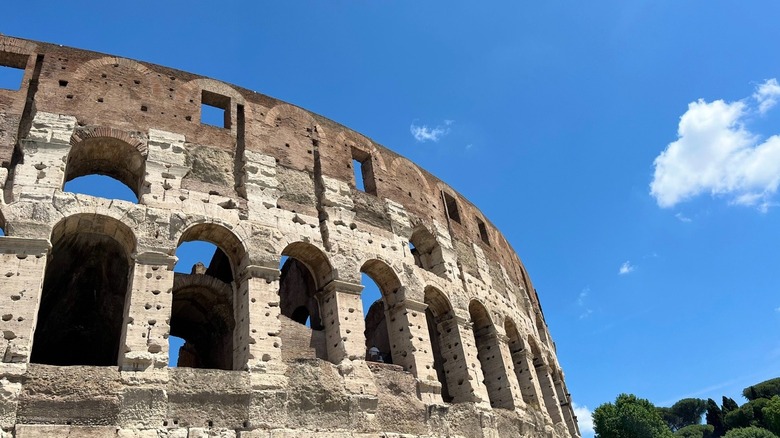Tourists Keep Making This Mistake At Italy's Most Iconic Landmarks (And It Could Cost You)
The greatest hits of Italian street food such as pizza, panini, and gelato are as recognizable worldwide as the country's most iconic landmarks — like Rome's Colosseum, Venice's St. Mark's Square, and Florence's Cathedral of Santa Maria del Fiore. But did you know that you're making a costly mistake by savoring these portable treats while exploring major monuments and historic centers, even though eating and drinking is as big a part of Italian culture and heritage as these sites are?
Tourists trying to save time by snacking on-the-go or save money by fueling up outside of restaurants may inevitably end up paying more than they bargained for. For more than a decade, these three popular cities have slapped fines on those, locals included, who unwittingly eat around top attractions, such as the Spanish Steps in Rome, where tourists will also be fined for sitting down. Part of a series of initiatives to preserve the integrity of these places, fines range from $45 to $570 depending on the severity of the violation.
Reactions have been mixed. When Rome enacted its ban in 2012, protesters gathered to show their disapproval. Online, opinions range from support to skepticism. On Rick Steves' Europe Travel Forum, for example, user CJean points out that "people spill drinks, drop food everywhere, and don't dispose of their trash properly. They obstruct sidewalks and entrances." Meanwhile, on Tripadvisor, a handful of previous travelers feel it's "just another way for the government to make a quick buck!"
Avoid eating at Italy's most iconic landmarks
But take heart ... and a hearty appetite. In Rome, Venice, and Florence, tourists can still eat and rest on public benches and fountain steps in parks and squares outside of food-restricted areas. In fact, this is one of the most authentic ways to indulge in Italy's spirited pastime of socializing and people-watching — and a fun spin on alfresco dining. In Florence, public seating is an art form dating back to Renaissance times, creating opportunities to exchange news and discourses.
For more dining options, you can familiarize yourself with the secret way to tell whether a restaurant in Italy is authentic, as well as how to avoid picking a tourist trap restaurant in Italy. That way, you can comfortably and properly experience the local philosophy toward food and hospitality without stress and without breaking the bank.
In Italy, eating and drinking is a love language. In fact, it's an important person-to-person interaction that's just as meaningful as what's on the menu. Even as meals are shorter and tables get smaller in many fast-paced societies, Italians still cherish this opportunity for chatter, conviviality, and great cooking. So, instead of treating food as a bare necessity, add a delightful and delectable meal in a cozy trattoria or bar to your itinerary as a meaningful cultural attraction that's just as important as all the major attractions are.

